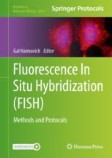Search
Search Results
-
Whole-mount RNA in situ hybridization technique in Torenia ovules
The expression pattern of an interested gene at a cellular level provides strong evidence for its functions. RNA in situ hybridization has been...

-
LncRNA TIALD contributes to hepatocellular carcinoma metastasis via inducing AURKA lysosomal degradation
The N6-methyladenosine (m6A) RNA methyltransferase METTL16 is an emerging player in RNA modification landscape and responsible for the deposition of...

-
Subsurface hydrocarbon degradation strategies in low- and high-sulfate coal seam communities identified with activity-based metagenomics
Environmentally relevant metagenomes and BONCAT-FACS derived translationally active metagenomes from Powder River Basin coal seams were investigated...

-
Interaction of TAGLN and USP1 promotes ZEB1 ubiquitination degradation in UV-induced skin photoaging
BackgroundUltraviolet A (UVA) irradiation can lead to skin damage and premature skin aging known as photoaging. This work found that UVA irradiation...

-
RNA In Situ Hybridization on Plant Tissue Sections: Expression Analysis at Cellular Resolution
RNA in situ hybridization offers a means to study the spatial expression of candidate genes by making use of specific, labelled RNA probes on thin...
-
Degradation and metagenomic analysis of 4-chlorophenol utilizing multiple metal tolerant bacterial consortium
Chlorophenols are persistent environmental pollutants used in synthesizing dyes, drugs, pesticides, and other industrial products. The chlorophenols...

-
Genomic evidence that microbial carbon degradation is dominated by iron redox metabolism in thawing permafrost
Microorganisms drive many aspects of organic carbon cycling in thawing permafrost soils, but the compositional trajectory of the post-thaw microbiome...

-
In situ conservation of Helosciadium nodiflorum: a crop wild relative of celery in Germany
Crop wild relatives (CWR) represent valuable sources of traits that can enhance the abiotic and biotic stress tolerance of crops. Due to climate...

-
Understanding the Drivers of Forest Degradation
Forests provide critical support for human survival as well as habitat for flora and fauna. However, due to ever-increasing anthropogenic pressure,...
-
Spatial map** of the total transcriptome by in situ polyadenylation
Spatial transcriptomics reveals the spatial context of gene expression, but current methods are limited to assaying polyadenylated (A-tailed) RNA...

-
In-situ gelation of fibrin gel encapsulating platelet-rich plasma-derived exosomes promotes rotator cuff healing
Although platelet-rich plasma-derived exosomes (PRP-Exos) hold significant repair potential, their efficacy in treating rotator cuff tear (RCT)...

-
Degradation of Xenobiotics by Cyanobacteria
Known as one of the first inhabitants of the Earth, cyanobacteria contribute significantly to the biogeochemical cycles of carbon and nitrogen. These...
-
Loss of coral thermotolerance following year-long in situ nursery propagation with a consecutively high summer heat-load
Exposure to more frequent ocean warming events is driving the loss of coral reef cover as the window of recovery between episodes of bleaching...

-
Regulation of primary cilia disassembly through HUWE1-mediated TTBK2 degradation plays a crucial role in cerebellar development and medulloblastoma growth
Development of the cerebellum requires precise regulation of granule neuron progenitor (GNP) proliferation. Although it is known that primary cilia...

-
RNA and Protein Detection by Single-Molecule Fluorescent in Situ Hybridization (smFISH) Combined with Immunofluorescence in the Budding Yeast S. cerevisiae
The inherent stochastic processes governing gene expression give rise to heterogeneity across individual cells, highlighting the importance of...
-
ARMC5 controls the degradation of most Pol II subunits, and ARMC5 mutation increases neural tube defect risks in mice and humans
BackgroundNeural tube defects (NTDs) are caused by genetic and environmental factors. ARMC5 is part of a novel ubiquitin ligase specific for POLR2A,...

-
Forest gaps accelerate the degradation of cellulose and lignin in decaying logs in a subalpine forest
Knowledge of the patterns in the degradation of cellulose and lignin in decaying logs under different climatic conditions is necessary to understand...

-
Single-Molecule Fluorescent In Situ Hybridization (smFISH) for RNA Detection in Bacteria
In this chapter, we describe in detail how to perform a successful smFISH experiment and how to quantify mRNA transcripts in bacterial cells. The...
-
Cordycepin delays postovulatory aging of oocytes through inhibition of maternal mRNAs degradation via DCP1A polyadenylation suppression
Postovulatory aging leads to the decline in oocyte quality and subsequent impairment of embryonic development, thereby reducing the success rate of...

-
Iron mobilization from intact ferritin: effect of differential redox activity of quinone derivatives with NADH/O2 and in situ-generated ROS
Ferritins are multimeric nanocage proteins that sequester/concentrate excess of free iron and catalytically synthesize a hydrated ferric oxyhydroxide...

